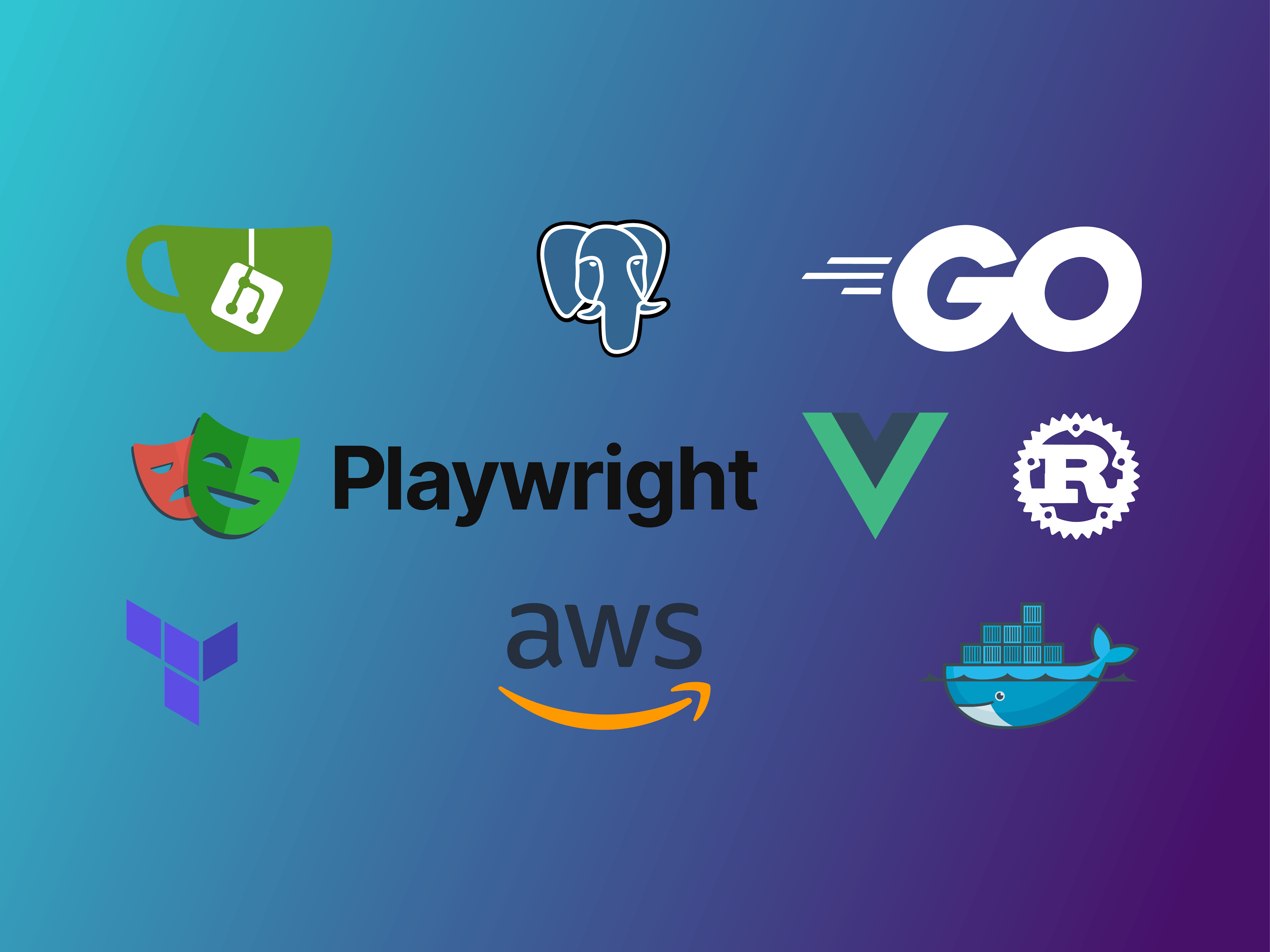Building a Modern Development Stack: A Case Study on Selecting and Integrating Technologies
Aug 1, 2024

Reading Time: 4 mins.
In today’s fast-paced development environment, selecting the right stack is critical for creating scalable, maintainable, and efficient solutions.
This article explores a comprehensive solution utilizing the following stack:
- Gitea, Application Soft Fork
- Golang (Go) for Server-Side Development
- Vue.js for Front-End Development
- Playwright for End-to-End Testing
- GitHub Actions and Self-Hosted Drone for CI/CD
- Docker Compose & Terraform for Deployment
- AWS for Cloud Infrastructure
- PostgreSQL Database
- Rust for Backend Utility Functions
We’ll dive into each technology, comparing it with alternatives, weighing trade-offs, and justifying the choices made.
1. Gitea
Gitea is a lightweight, self-hosted Git service, ideal for managing source code repositories. The decision to use a Gitea soft fork rather than mainstream solutions like GitHub or GitLab was influenced by:
- Customization: A soft fork allows Gitea to be tailored to specific needs without starting from scratch. This was preferable over using GitHub or GitLab due to Gitea’s lower resource consumption and easier adaptation for specific organizational needs.
- Cost and Control: Hosting Gitea internally provides greater control over features and integrations, and avoids costs associated with cloud-hosted services.
2. Golang (Go)
Go was chosen for server-side development due to its:
- Performance: Go offers fast execution and efficient concurrency handling, making it suitable for high-performance applications.
- Simplicity and Maintainability: Its straightforward syntax and robust standard library facilitate easier development and maintenance compared to more complex languages like Java or C#.
In comparison to Node.js or Python, Go provides better performance for concurrent operations and lower memory footprint, essential for handling high loads and ensuring scalability.
3. Vue.JS
Vue.js was selected for front-end development because of:
- Ease of Integration: Vue.js integrates seamlessly with other technologies and is easy to set up compared to frameworks like Angular or React.
- Flexibility and Performance: Vue.js offers a balance between flexibility and performance, allowing for fast development and responsive user interfaces.
While React and Angular were also considered, Vue.js’ simplicity and lower learning curve tipped the scales, especially for teams with varied experience levels.
4. Playwright
Playwright was chosen for end-to-end (e2e) testing due to:
- Cross-Browser Testing: Playwright supports multiple browsers and devices out of the box, which is more comprehensive compared to Selenium.
- Modern Features: It provides advanced features such as auto-waiting and built-in retries, offering a more robust testing framework than older tools.
Selenium was considered but Playwright’s modern approach and better integration with JavaScript/TypeScript made it the preferred choice.
5. GitHub Actions and Self-Hosted Drone
The combination of GitHub Actions and Self-Hosted Drone for CI/CD was selected based on:
- Flexibility: GitHub Actions offers extensive automation possibilities integrated directly with GitHub repositories, while Drone provides a customizable, lightweight CI/CD solution for additional flexibility.
- Scalability and Control: Self-hosted Drone allows for better control over the CI/CD environment, which is crucial for handling specific deployment needs and scaling.
Alternatives like Jenkins or GitLab CI were considered but GitHub Actions’ tight integration with GitHub and Drone’s lightweight nature provided a better fit for the team’s requirements.
6. Docker Compose & Terraform
Docker Compose and Terraform were chosen for deployment due to:
- Containerization: Docker Compose simplifies managing multi-container applications, making it easier to develop and test locally before deploying.
- Infrastructure as Code: Terraform enables managing infrastructure through code, ensuring consistency and repeatability in deploying resources across different environments.
While alternatives like Kubernetes or Ansible were considered, Docker Compose’s simplicity and Terraform’s robust capabilities for infrastructure management made them the optimal choice.
7. AWS
AWS was selected for cloud infrastructure because of:
- Comprehensive Services: AWS offers a wide range of services and tools, from compute to storage to databases, providing a robust platform for scalable and reliable infrastructure.
- Global Reach: AWS’s global infrastructure ensures low latency and high availability for users worldwide.
While other cloud providers like Azure or Google Cloud were considered, AWS’s extensive ecosystem and proven track record in large-scale deployments were decisive factors.
8. PostgreSQL
PostgreSQL was chosen for database management due to:
- Advanced Features: PostgreSQL supports complex queries, transactions, and provides advanced features like JSONB for document storage, making it more versatile than MySQL or SQLite.
- Scalability and Reliability: PostgreSQL’s robustness and scalability make it a reliable choice for handling large datasets and high-traffic applications.
MySQL was an alternative but PostgreSQL’s advanced capabilities and adherence to SQL standards made it the preferred choice.
9. Rust
Rust was used for backend utility functions because of:
- Performance and Safety: Rust offers high performance and memory safety without a garbage collector, ideal for performance-critical backend functions.
- Concurrency: Rust’s concurrency model allows safe and efficient handling of parallel tasks.
While languages like C++ were considered, Rust’s modern features and safety guarantees made it a better fit for integrating with the Go-based backend.
The selection of technologies for this stack involved balancing performance, ease of integration, cost, and control. Each component was chosen for its specific advantages, ensuring a robust and efficient development environment. By leveraging this stack, the team can deliver high-quality software solutions while maintaining flexibility and control over their technology choices.